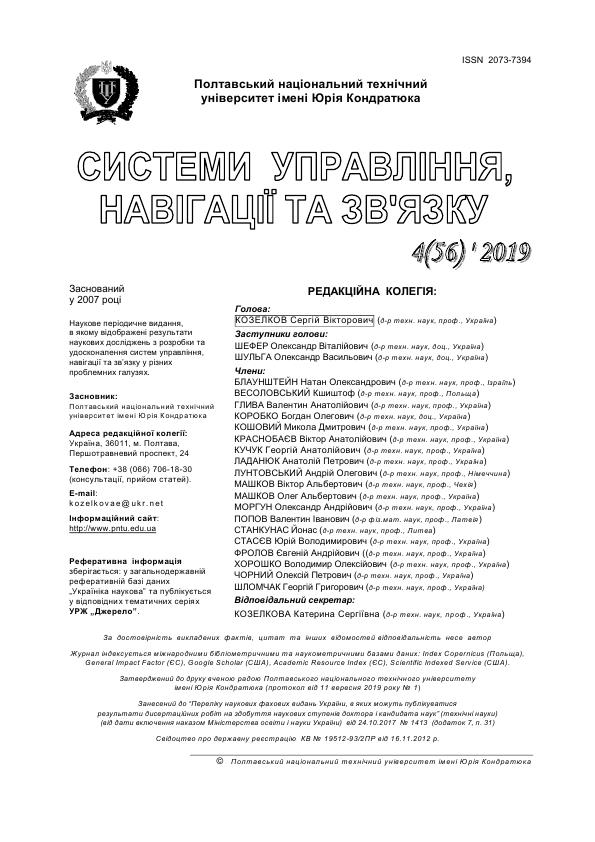DEVELOPMENT OF THE CLASSIFICATION OF THE CYBER SECURITY AGENTS BOUNDED RATIONALITY
DOI:
https://doi.org/10.26906/SUNZ.2019.4.082Keywords:
cyber security, decision making process, decision maker, bounded rationalityAbstract
The subject are the bounded rationality agents of cyber security system. The purpose of this work is is to build a classification system for agents of a cybersecurity system with limited rationality. The tasks: consideration of the decisionmaking process by agents in cybersecurity systems, analysis of various manifestations of bounded rationality of agents of the cybersecurity system, introduction of classification features of bounded rationality, formal presentation of bounded rationality of various types, combining agents with various types of bounded rationality into a whole classification system. Results. Presents approaches to the classification of the concept of rationality in relation to cybersecurity systems. Such types of rationality are considered as strong, semi-strong, weak. Further classification of types of rationality is carried out on the basis of the place of manifestation of rationality. For this, the decision-making process in the cybersecurity system has been considered, formal relations have been introduced, which characterize its various stages. Such types of bounded rationality as informational, methodological, predictive, evaluative and conditional are considered. The ratio of the considered types of rationality is presented. Conclusion: A comparison of various types of bounded rationality, based primarily on its place in the decision-making process, made it possible to propose a classification scheme of bounded rationality characteristic of agents of the cybersecurity system. The result of the formalization of the description of bounded rationality is presented, which can be used as the basis for the development of models of behavior of interacting agents of cybersecurity systems.Downloads
References
Herbert A. Simon (1955) / A Behavioral Model of Rational Choice // The Quarterly Journal of Economics, Vol. 69, No. 1 (Feb., 1955), pp. 99-118
Lempert, R. (2002). Agent-based modeling as organizational and public policy simulators. Proceedings of the National Academy of Sciences 99(3): 7195–7196.
Tuomas W Sandholm and Victor R Lesser (1995). Coalition formation among bounded rational agents. Technical report, University of Massachusetts at Amherst Computer Science Department, 1995.
Rubinstein, Ariel, Modeling Bounded Rationality (Cambridge, MA: MIT Press, 1998).
Gabaix, Xavier, ‘‘Some Game Theory with Sparsity-Based Bounded Rationality,’’ Working Paper, New York University, 2013.
Amin Salih M., Yuvaraj D., Sivaram M., Porkodi V. Detection And Removal Of Black Hole Attack In Mobile Ad Hoc Networks Using Grp Protocol. International Journal of Advanced Research in Computer Science. Vol. 9, No 6. P. 1–6, DOI: http://dx.doi.org/10.26483/ijarcs.v9i6.6335
Saravanan S., Hailu M., Gouse G.M., Lavanya M., Vijaysai R. Optimized Secure Scan Flip Flop to Thwart Side Channel Attack in Crypto-Chip. International Conference on Advances of Science and Technology, ICAST 2018. Lecture Notes of the Institute for Computer Sciences, Social Informatics and Telecommunications Engineering. Vol 274. Springer, Cham. DOI: https://doi.org/10.1007/978-3-030-15357-1_34
Manikandan V, Porkodi V, Mohammed AS, Sivaram M, “Privacy Preserving Data Mining Using Threshold Based Fuzzy cmeans Clustering”, ICTACT Journal on Soft Computing, Volume 9, Issue 1, 2018, pp.1813-1816. DOI: 10.21917/ijsc.2018.0252
Новиков Д.А. Сетевые структуры и организационные системы. М.: ИПУ РАН, 2003. – 102 с.




